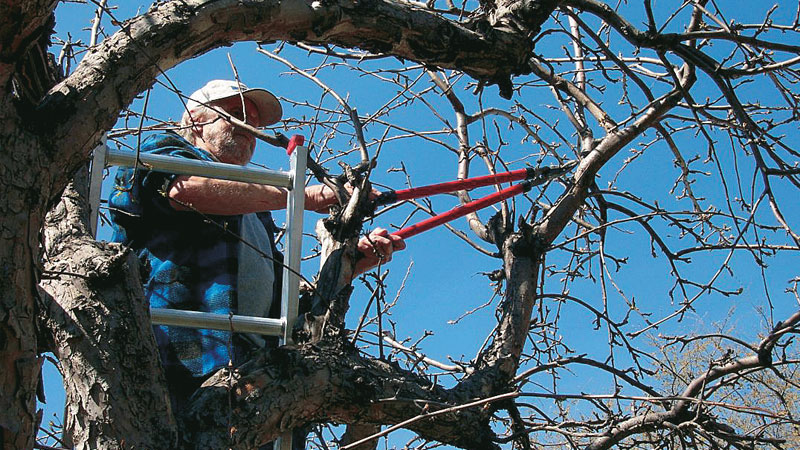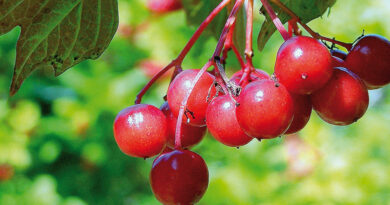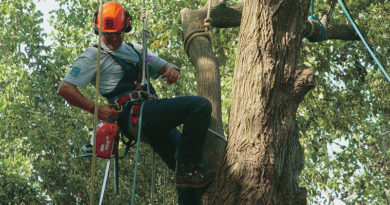Basic Pruning Techniques
by Mike Allen
There are some basic pruning techniques that must be followed to enhance and maintain a healthy tree. On our Canadian climate tree growth can be slow.
Rule Number 1 is do no harm!
Remember to sterilize the pruning tool after each cut, even in the same tree. This is prevent the spread of obvious fungus such as black knot in cherry. The same goes for wilted leaves in fire blight in apple or mountain ash.
Both fungi and bacteria in the woody plant can leave microscopic spores on the tools. Sterilize tools with diluted bleach (one part bleach to nine parts water), methyl hydrate or rubbing alcohol.
How to prune Deciduous trees
- Prune branches at a junction point with a larger branch or the main stem or trunk. Never in the middle of the branch. Be sure to leave the “collar”, the swelling at the base of the branch, intact. This is where the tree keeps its arsenal of healing tools.
- Fall is the best time to prune deciduous trees. Be sure the tree is dormant (all the leaves have fallen).
- Cuts made within leaving this area alone will usually seal over with callous wound wood. Do not cut into the branch bark ridge. End the cut in the branch collar at the base of the branch.
- Never leave a stub branch (the part of a branch left when you cut in the middle of a branch instead of at the base). It will be the source of entry for wood decay fungi, other diseases and insects such as wood borers.
- Never prune more than one-third of the living branches from a deciduous tree in one year.
- When pruning branches over eight cm in diameter, make a first undercut about 30 to 50 cm away from the main point of attachment. The undercut prevents bark tear if the branch suddenly falls away. Subsequent cuts can remove the weight of the branch. The final cut should be in the branch collar region.
- Do not use pruning paint to cover a pruning cut. Pruning paint is ineffective. Properly pruned deciduous trees will seal over their pruning wounds.
How to prune Coniferous trees and shrubs
- Large coniferous evergreen branches should be pruned adjacent to the bark at their point of attachment. Resins within the tree will usually seep out of the edge of the cut and crystallize over the exposed wood area.
- Early June is the best time to prune coniferous evergreen trees and shrubs, when the buds open and new spring growth is developing.
- Coniferous evergreen trees and shrubs with regular whorled branching patterns such as spruce (Picea), fir (Abies), pine (Pinus) and Douglas fir (Pseudotsuga menziesii) should be pruned close to the junction of the twig or branch attachment with a larger branch.
- Coniferous evergreen trees and shrubs with a random pattern of green branchlets or twiglets, such as hemlock (Conium maculatum), yew (Taxus) and juniper (Juniperus) can be sheared to shape.
- For coniferous evergreen trees, pruning should never remove more than one-quarter of their healthy green growth in a year.
Michael Allen is a consulting urban forester and certified ISA arborist.




